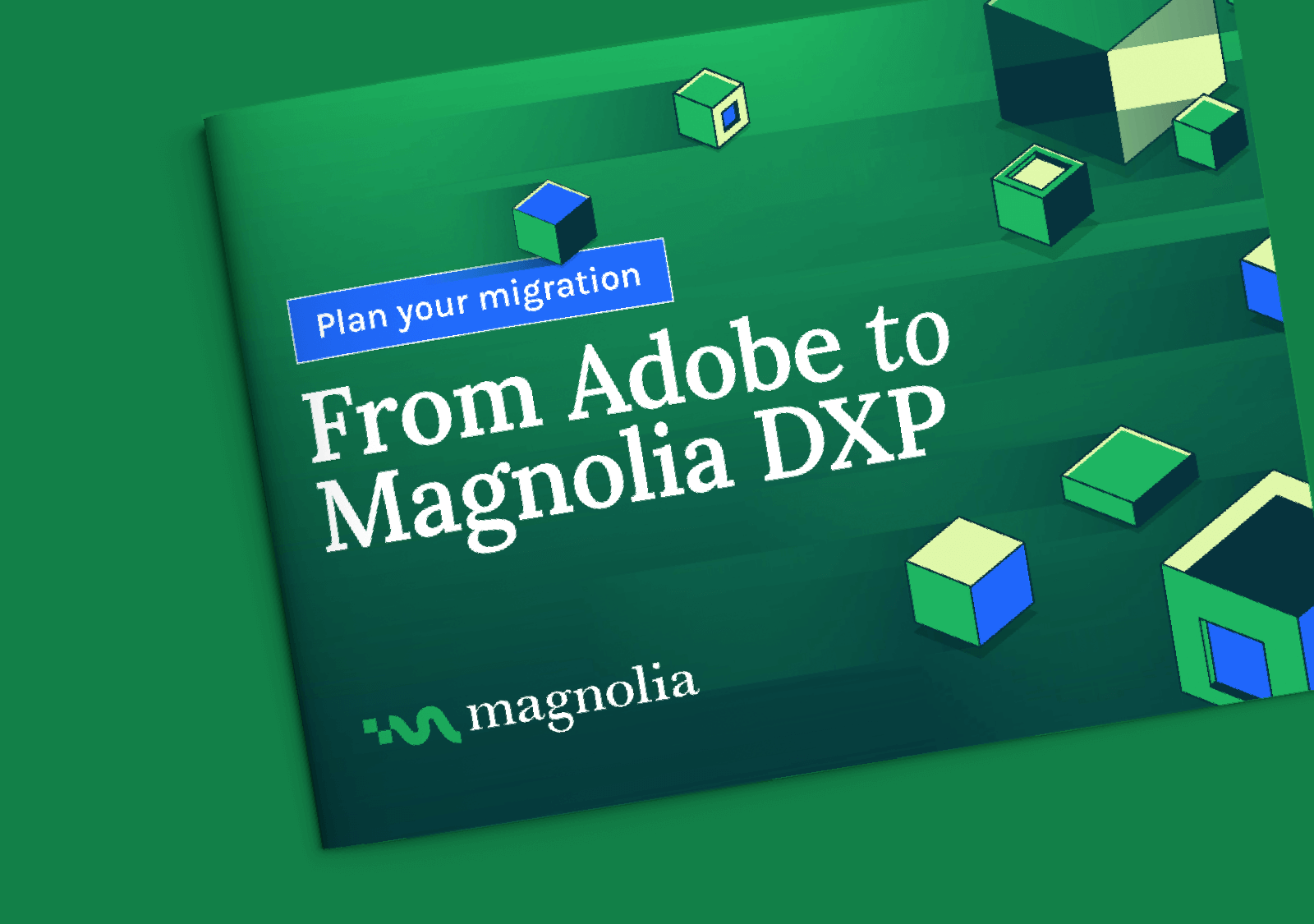Why switch from AEM (Adobe Experience Manager) to Magnolia
Magnolia is the path from AEM for CMOs that care about ROI.
Magnolia DXP is trusted by brands like Atlassian, Sanofi and Sainsbury’s for its open, flexible architecture and ease of use for marketing teams. Magnolia’s rich features, AEM-like architecture, and transparent pricing let brands cut their marketing overheads without sacrificing functionality or speed to market.
However, Magnolia also supports diverse, non-proprietary development approaches. It offers low/no-code options through Light Development with YAML and Freemarker, as well as headless capabilities compatible with popular front-end frameworks. This flexibility allows businesses to select the best technology based on their team’s expertise and requirements.
When it comes to Digital Experience Platform (DXP) capabilities, Adobe provides complementary products such as Target, Analytics, and Campaign, while Magnolia integrates seamlessly with best-in-class third-party solutions. Explore our marketplace to see the available integrations.
When it comes to Digital Experience Platform (DXP) capabilities, Adobe provides complementary products such as Target, Analytics, and Campaign, while Magnolia integrates seamlessly with best-in-class third-party solutions. Explore our marketplace to see the available integrations.
Introduction
Introduction
Benefits of switching from AEM to Magnolia
Lower costs, higher value
Magnolia provides 80-90% of AEM’s features at a much lower price and total cost of ownership. Our pricing is fair, transparent (you know exactly what you will be charged for), and not inflated by brand prestige. Development is faster and more efficient, making it easier to customize the remaining 10-20% of functionality.
Unlike AEM, which charges based on users, hosting infrastructure (CPU), and even API calls (content requests), Magnolia offers a flat subscription rate that scales with traffic—aligning costs with actual business outcomes rather than arbitrary and sometimes unpredictable usage metrics.
Reduce complexity
Both AEM and Magnolia have the tools and scale to build enterprise-grade digital experiences, but AEM’s suite-based approach adds unnecessary complexity. Adobe often bundles auxiliary products, making it unclear whether they can function independently—leading clients to pay for features they don’t need while managing a resource-heavy codebase.
This scale isn’t always supported by smooth interoperability or common UI conventions. Many elements of the suite were acquired rather than natively built, and each is managed by separate teams, so they can easily fall out of sync or diverge.
All of this means that AEM’s UI can be overwhelming for non-technical teams, and its development requires specialized skills with a steep learning curve. Magnolia, in contrast, keeps things simpler and more user-friendly without sacrificing power.
Increase flexibility
Both AEM and Magnolia serve as DXPs, but their approaches differ.
Adobe’s all-in-one suite can be restrictive if you use diverse technologies or want to adopt new ones. Magnolia’s open, composable model lets you choose the best tools (i.e. for analytics, marketing automation, and commerce) while seamlessly integrating them. It not only powers content management, personalization, and optimization but also acts as the glue connecting your entire digital ecosystem—offering teams flexibility while maintaining a unified control center in the Magnolia UI.
Effortless migration
Effortless migration
Effortless migration from AEM to Magnolia
Thanks to Magnolia’s architectural similarity to AEM—both using a Java Content Repository (JCR) for content storage, security, and versioning—migration is smooth and straightforward.
To further speed up the process, we’ve developed a migration blueprint that automates content and asset transfers, reducing errors and accelerating time to value. With this approach, you can complete your AEM-to-Magnolia migration in just 3-4 weeks.
Explore the full migration process in our guide
Who’s making the switch?
Who’s making the switch?
Who’s making the switch from AEM to Magnolia?
Enterprises seeking a more flexible, cost-effective alternative to AEM are increasingly choosing Magnolia—it’s a trend we see repeatedly in our sales conversations.
While some migrations remain confidential, the facts below highlight the impact of switching to Magnolia:
Want to learn more? Contact us—we can even connect you with brands that have made the switch.
Want to learn more?
Contact us—we can even connect you with brands that have made the switch.
FAQs
FAQs

